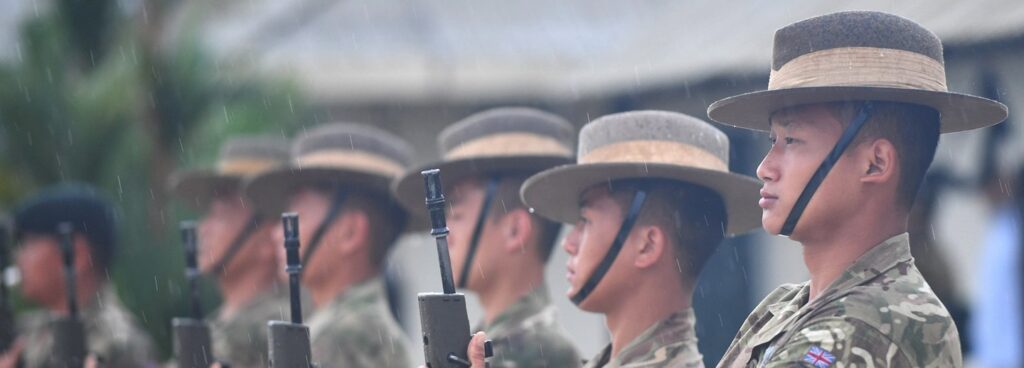
The Royal Gurkha Rifles (RGR) is a regiment of the British Army with a storied history and reputation for exceptional bravery, discipline, and loyalty. Gurkhas, originating from Nepal, have served in the British Army for over two centuries and have become synonymous with elite military capability. The RGR continues this proud tradition, blending time-honored customs with modern military effectiveness.
Historical Background
The origins of Gurkha service in the British Army date back to the early 19th century. Following the Anglo-Nepalese War (1814-1816), the British were so impressed by the fighting prowess of the Gurkhas that they decided to recruit them into their own forces. The Sugauli Treaty in 1816 formalized this arrangement, leading to the formation of the first Gurkha regiments. Over time, these units became an integral part of the British Indian Army and later the British Army.
Formation of the Royal Gurkha Rifles
The Royal Gurkha Rifles was formed on July 1, 1994, through the amalgamation of four existing Gurkha regiments: the 2nd King Edward VII’s Own Gurkha Rifles (The Sirmoor Rifles), the 6th Queen Elizabeth’s Own Gurkha Rifles, the 7th Duke of Edinburgh’s Own Gurkha Rifles, and the 10th Princess Mary’s Own Gurkha Rifles. This restructuring aimed to streamline the Gurkha contingent within the British Army while preserving their unique traditions and heritage.
Structure and Organization
The Royal Gurkha Rifles is currently composed of two battalions:
- 1st Battalion (1 RGR): A light infantry battalion based in Shorncliffe, Kent, England. The 1st Battalion specializes in a wide range of infantry roles, including rapid deployment and peacekeeping operations.
- 2nd Battalion (2 RGR): Based in Brunei, the 2nd Battalion plays a key role in jungle warfare training and regional security in Southeast Asia. The presence of 2 RGR in Brunei ensures the British Army’s ability to operate effectively in tropical environments and maintain strong ties with regional allies.
Operational Role
The RGR has been actively involved in numerous military operations around the world, demonstrating their versatility and effectiveness. Their notable engagements include:
- Falklands War (1982): Gurkha units played a crucial role in the recapture of the Falkland Islands from Argentine forces.
- Bosnia (1990s): The RGR was deployed as part of peacekeeping efforts during the Yugoslav Wars.
- Kosovo (1999): They participated in NATO operations to stabilize the region during the Kosovo War.
- Afghanistan (2001-2014): The RGR was heavily involved in the International Security Assistance Force (ISAF), conducting counter-insurgency operations and helping to train Afghan security forces.
- Iraq (2003-2011): They took part in operations during the Iraq War, contributing to both combat and peacekeeping missions.
Training and Recruitment
Gurkhas are recruited directly from Nepal through a rigorous selection process known as the Gurkha Recruiting Depot. The selection process is highly competitive, focusing on physical fitness, mental resilience, and aptitude. Those who pass the selection are then trained at the British Army Training Centre in Catterick, North Yorkshire, where they undergo the standard 37-week Combat Infantry Course, which includes specialized training tailored to the unique capabilities of Gurkha soldiers.
Traditions and Culture
The Royal Gurkha Rifles maintain many traditions that honor their Nepalese heritage and military history. One of the most iconic symbols is the kukri, a distinctive curved knife that is both a weapon and a tool. The kukri is a central element of the Gurkha soldier’s kit and is deeply embedded in their cultural identity.
The regiment’s regimental march, “Yo Nepali,” and its regimental quick march, “Bravest of the Brave,” reflect the pride and spirit of the Gurkha soldiers. The RGR’s motto, “Kayar Hunu Bhanda Marnu Ramro” (Better to Die than Live a Coward), encapsulates the valor and determination that define the regiment.
Ceremonial Duties
In addition to their operational roles, the Royal Gurkha Rifles perform ceremonial duties that showcase their discipline and heritage. They participate in significant state events and parades, including Trooping the Colour and the Changing of the Guard at Buckingham Palace. These duties reinforce the bond between the Gurkhas and the British Crown.
Cultural Impact and Legacy
The Royal Gurkha Rifles have made a lasting impact on both the British Army and the communities they serve. Their legacy of bravery and excellence has earned them numerous battle honors and decorations, including 13 Victoria Crosses awarded to individual Gurkha soldiers. The regiment’s contributions to British military history and their unique cultural identity continue to be celebrated and respected.
Conclusion
The Royal Gurkha Rifles stand as a testament to the enduring partnership between Nepal and the United Kingdom. With their unparalleled bravery, rigorous training, and deep-rooted traditions, the RGR embodies the highest standards of military service. As they continue to serve in various capacities around the world, the Gurkhas remain a vital and respected component of the British Army, living up to their motto of preferring death over dishonor.